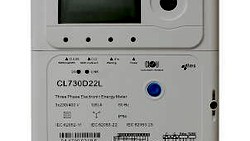Electric vehicles (EVs) are becoming increasingly popular as people seek to reduce their carbon footprint and benefit from the lower operational costs of EVs. However, owning an EV comes with some challenges, including the limited range of the vehicle on a single charge, and the need for long charging times. To address some of these issues, bi-directional EV car charging has emerged as a viable solution. In this article, we will explore what bidirectional EV car charging is, and the benefits and limitations of this technology.
What is Bidirectional EV Car Charging?
Bidirectional EV car charging is a technology that allows the vehicle's battery to both charge and discharge. With traditional EV charging, the battery can only receive power from an external source. With bi-directional charging, EV owners can use the same charging cable to both charge their vehicle and export power back to the grid.
This technology opens up new possibilities for the way that EVs are used. One of the most significant advantages of bidirectional EV charging is the potential to create a vehicle-to-grid (V2G) system, where EVs can be used as mobile energy storage systems to power homes or buildings during peak electricity demand.

(symbol Image, Credit CLOU)
Benefits of Bidirectional EV Car Charging
- Vehicle-to-grid (V2G)
The most significant advantage of bidirectional EV charging is the ability to create a V2G system. This technology allows EV owners to supply electricity to the grid, which can be used to power homes, buildings, or other EVs. This capability can help to support the stability of the electricity grid, especially during periods of peak demand, when traditional power plants may be struggling to meet demand. - Grid Services
Bidirectional EV car charging offers numerous advantages for utilities, particularly in terms of grid services such as frequency regulation, congestion management, voltage control, and emergency response. By allowing EVs to both charge and discharge, utilities can tap into EVs as a flexible and controllable distributed energy resource. This not only helps to balance the grid during times of high demand, but also enables utilities to reduce the need for costly infrastructure upgrades and improve grid performance and reliability. - Reduced Energy Costs
With bi-directional charging, EV owners can sell excess energy back to the grid when it is not needed. This can help to reduce energy costs, especially during peak demand hours when electricity prices are highest. - Emergency Backup Power
In the event of a power outage, bi-directional EV car charging can serve as a backup power source. By allowing the battery to discharge, EV owners can use the energy stored in the battery instead of relying solely on the power grid.
Limitations of Bidirectional EV Car Charging
- Limited Availability
Bidirectional EV charging technology is still in its infancy, and as such is not widely available yet. - Infrastructure
The implementation of a V2G system would require significant infrastructure upgrades to support bi-directional charging, including the installation of smart charging stations and a grid management system capable of handling the variability of energy from EV batteries. - Battery Degradation
Despite the potential benefits of bidirectional EV charging, there are also concerns about the impact on battery life. Discharging an EV battery too frequently can potentially reduce its lifespan, and damage the battery.
Takeaway
While rules promoting energy sustainability have sparked interest in bidirectional car charging, it's still not very common. This is because the standards for this technology are still being developed, and there aren't many strong business reasons to invest in it yet. The high costs involved also make it difficult for companies that aren't specialists in this area to get involved, slowing down progress until it becomes more financially appealing. Additionally, with different countries having their own rules and unclear pricing structures, understanding and adopting bidirectional car charging can be quite complicated.
That's why our team of experts is here to help you measure and record your energy import and export accurately. Contact us today to learn more about how we can help you to support the grid through bidirectional measurement and testing.





All comments are moderated before being published. Inappropriate or off-topic comments may not be approved.